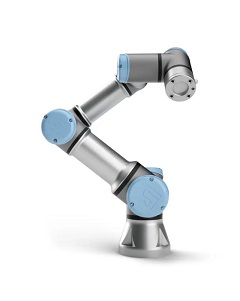
The global manufacturing sector is undergoing a transformative wave driven by innovation and energy efficiency, with automation, digitalization, and flexible intelligent equipment at its core. While traditional industrial robots excel in speed, precision, and heavy payloads, they face limitations in adapting to dynamic production lines, reducing operational complexity, and enhancing productivity. Enter collaborative robots (cobots)—redefining competitiveness with their safety, user-friendliness, flexibility, and rapid ROI. Central to their performance are advanced joint technologies, such as magnetic encoders, which enable precise motion control and reliability in human-robot collaborative environments.
Expanding Applications and Market Growth
Collaborative robots have evolved beyond basic tasks to master complex applications like assembly, glue dispensing, welding, and polishing. Industries from automotive to electronics now leverage cobots for tasks requiring millimeter-level accuracy—enabled by magnetic encoder-equipped joints that ensure seamless feedback and positioning. According to MIR Industry, the global cobot market is projected to exceed 70,000 units sold in 2024, a 30% year-on-year increase. As technology matures, cobots will penetrate sectors like healthcare, agriculture, and logistics, further boosted by innovations in magnetic sensing and AI-driven adaptability.
Winning Strategies: Innovation and Versatility
To thrive in this competitive landscape, manufacturers must prioritize technological integration and scenario diversification. Beyond advancements in robot kinematics, the fusion of AI, IoT, and big data enables remote control, predictive maintenance, and multi-robot coordination. Magnetic encoders, with their contactless operation and resistance to dust/vibration, play a pivotal role in enhancing joint durability and precision—critical for cobots handling tasks from delicate circuit board assembly to heavy-duty machining.
Key Innovations Driving Success:
-
Magnetic Encoders in Robot Joints:
-
Enable ultra-precise angular measurement (e.g., ±0.1° accuracy) for smooth motion in high-difficulty tasks like curved-surface coating or flexible wire insertion.
-
Reduce downtime with maintenance-free operation, ideal for 24/7 production environments.
-
-
Multi-Task Adaptability:
-
Cobots now handle payloads from <5 kg (light assembly) to >20 kg (palletizing), supported by modular designs and sensor-rich end-effectors.
-
-
AI-Powered Vision Systems:
-
Integrate with magnetic encoders to enable real-time path correction, such as compensating for workpiece misalignment during welding.
-
Case Studies: Cobots in Action
-
Automotive Assembly: A cobot with magnetic encoder-equipped joints performs precision screw-driving on EV battery packs, achieving 99.9% consistency while operating safely alongside workers.
-
Electronics Polishing: High-resolution magnetic encoders ensure micron-level force control during smartphone casing finishing, eliminating surface defects.
-
Aerospace Welding: Collaborative systems use encoder feedback to adjust welding parameters dynamically, ensuring flawless seams on curved turbine components.

Hi, this is a comment.
To get started with moderating, editing, and deleting comments, please visit the Comments screen in the dashboard.
Commenter avatars come from Gravatar.